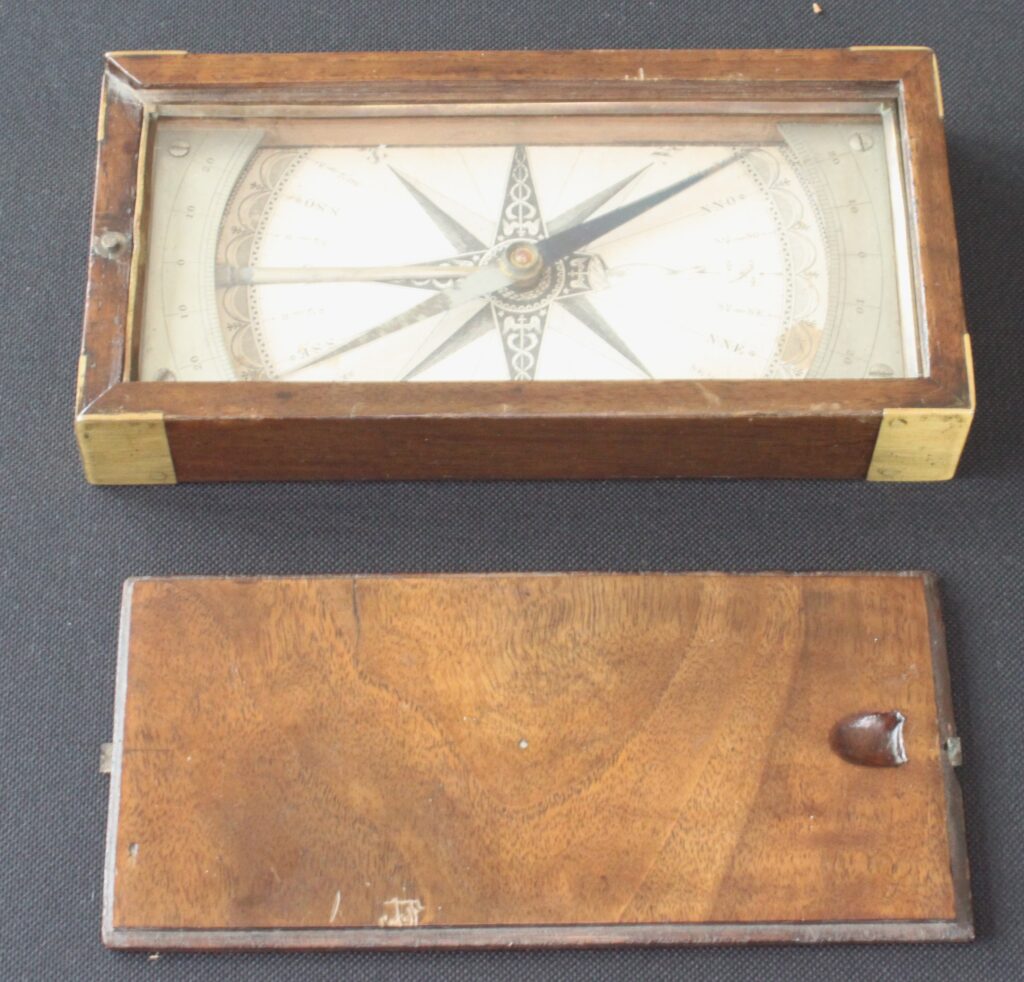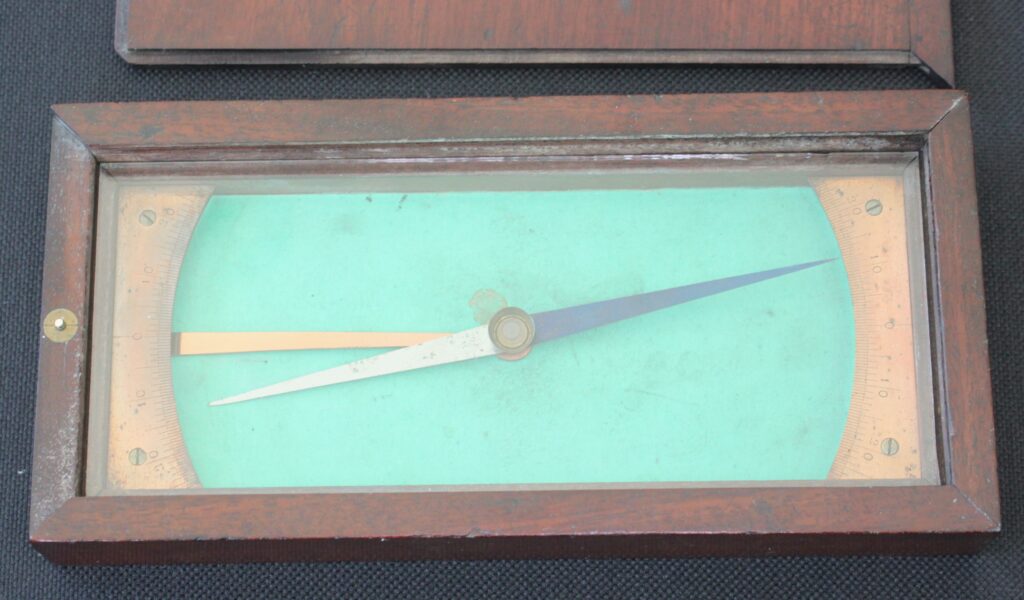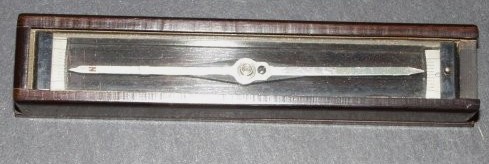A variation compass measures the magnetic variation, at its location by aligning the North cardinal with True North so the magnetic needle will indicate the variation. I have been collecting compasses for over 20 years but was blissfully unaware that such an instrument existed, so my education continues.
In the Philosophical Transactions of the RGS Vol76 (1786) a paper by Mr Tiberius Cavallo FRS, describes the construction of a Variation Compass.
At this time Variation was understood to be changing, in the northern hemisphere, from an Easterly direction to a Westerly direction, but it could not have been to about 1820 that it was realised the magnitude of that change was under 30 deg. So even by the time of Mr Tiberius Cavallo’s efforts to measure variation, the fact that the variation would change from East to West within the next 25 years or so was not fully appreciated.

We now understand that the earth’s magnetic poles reverse on a regular basis and the next reversal is long overdue. The last switch was about 780,000 ago and they average about once every 300,000 years. Symon’s Patent is amongst one of the attempts to solve the issue of the error that afflicts the reading of magnetic north see Symons Patent for more details.


There is also an instrument called a Declinometer that uses the Pole star to establish local variation. This is not totally accurate because for example in the Northern Hemisphere, Polaris traces a circle 0.73° in radius around the north celestial pole, introducing an error.

Based on the design of these early Variation Compasses, I would suggest that the Trough Compasses that appeared around the WWI period are in fact a Variation Compass. They are used in surveying with either a plane table (a rigid table used for drawing up maps and charts of a local area) or a theodolite. As such they have no real use on their own.
Further reading
There are, I understand examples in the National Maritime Museums collection (https://www.rmg.co.uk/collections/search/Variation%20Compass) including a Variation Compass by Ramsden of London.
An example of a Declinomter can be found in the Smothsonian collection (https://www.si.edu/object/declinometer%3Anmah_1029287).
